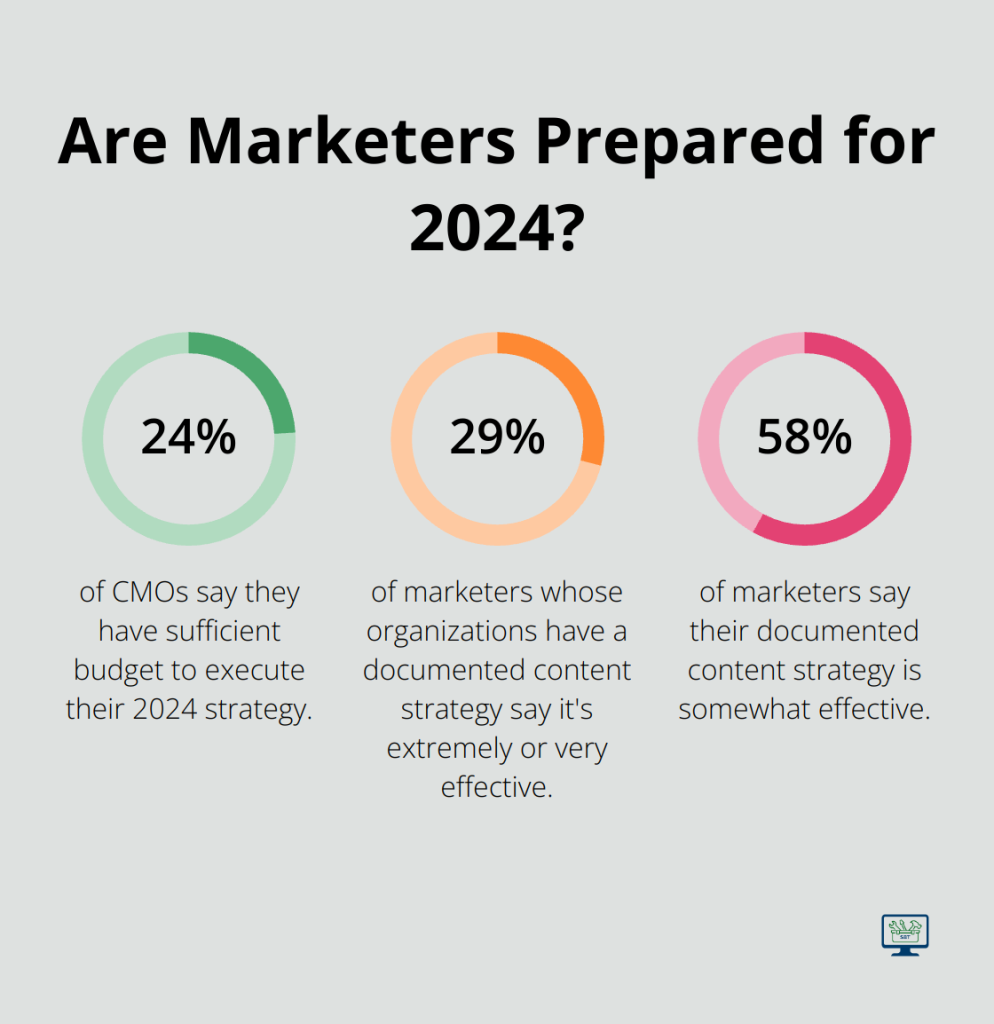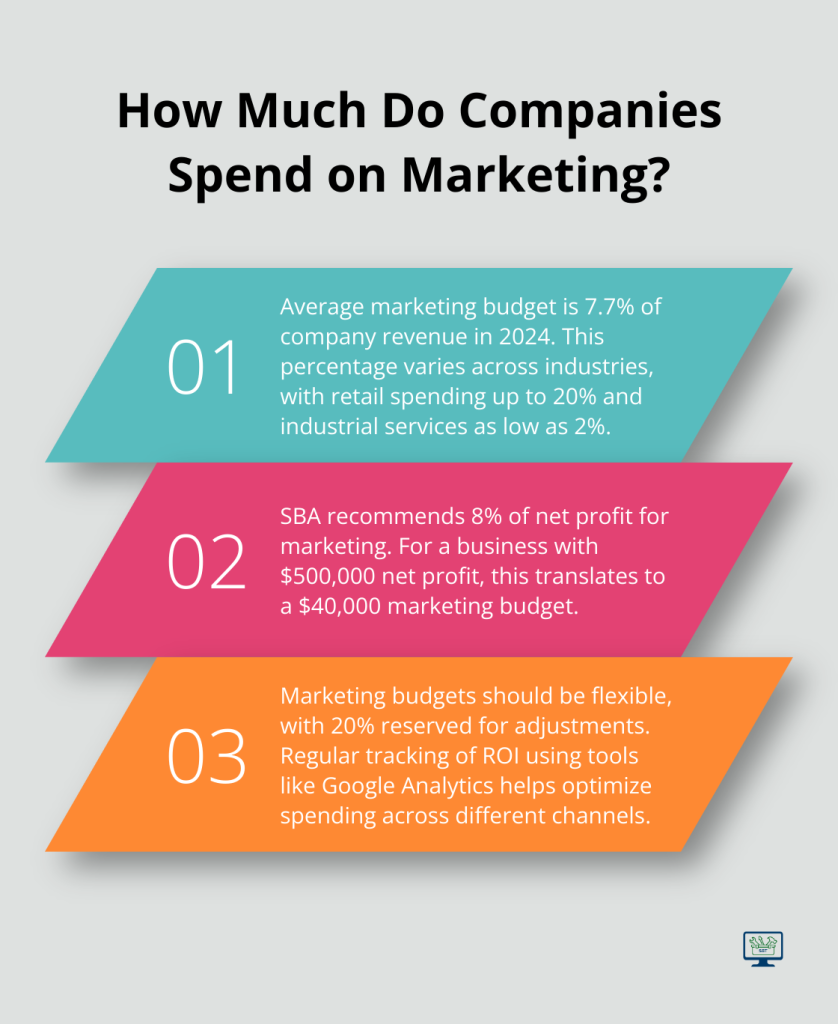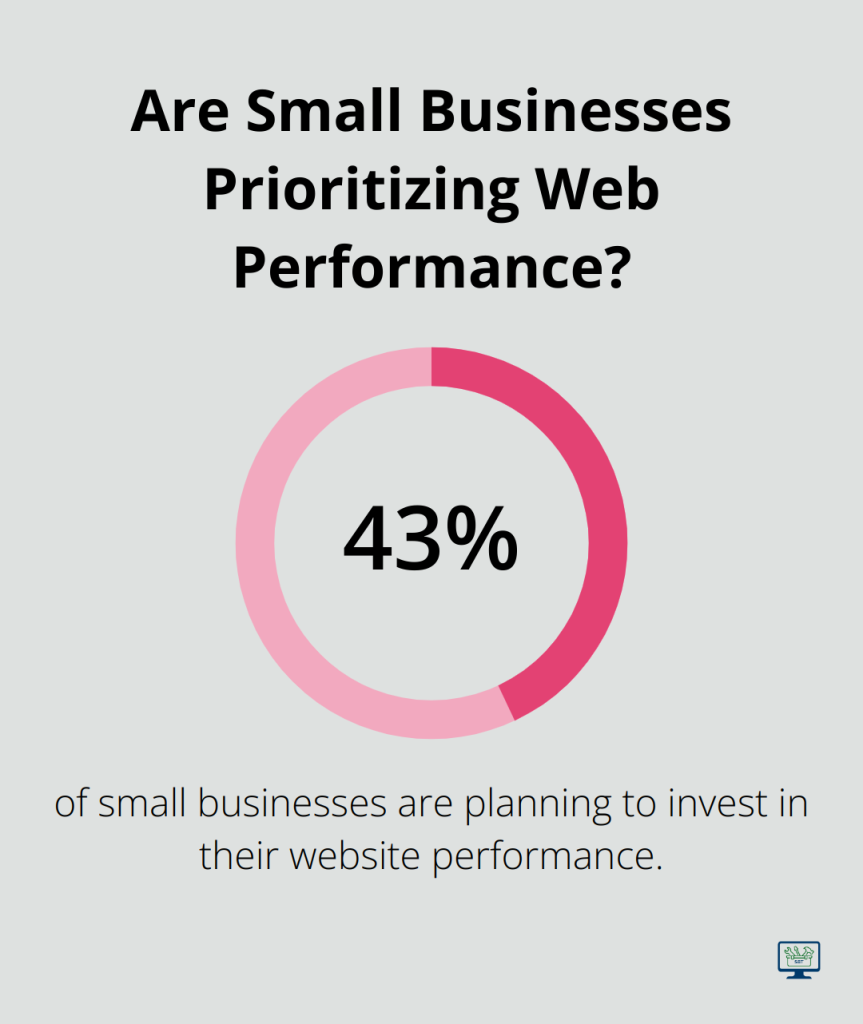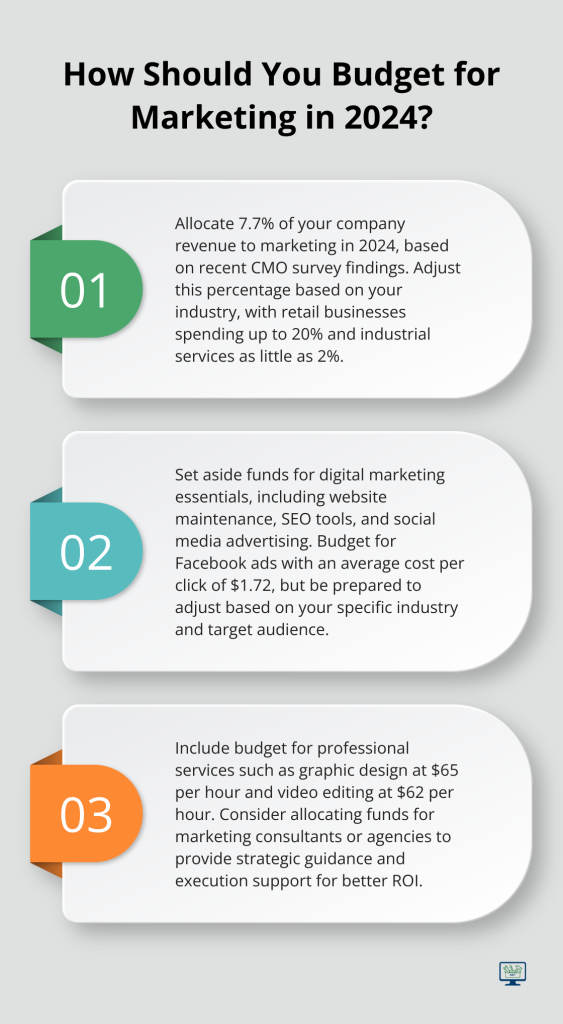Setting a marketing budget for your small business is a critical step in driving growth and success. At SmallBizToolbox, we understand the challenges entrepreneurs face when allocating resources for promotion.
This guide will walk you through the process of creating a marketing budget that aligns with your business goals and maximizes your return on investment. We’ll cover key strategies, industry benchmarks, and practical tips to help you make informed decisions about your marketing spend.
Why a Marketing Budget Matters
Driving Business Growth
A well-planned marketing budget serves as the foundation for your small business’s growth strategy. It’s not just about allocating funds; it’s about making smart investments that yield results. According to Gartner, only 24% of CMOs say they have sufficient budget to execute their 2024 strategy. This highlights the importance of adequate marketing investment in propelling business success.
Aligning Expenditure with Objectives
Your marketing budget should mirror your business goals. If you aim to boost online sales by 20%, you might allocate more resources to digital advertising and e-commerce optimization. Small Business Trends reports that the average business spends 1.08% of its revenues on advertising, with variations from industry to industry. However, if rapid growth is your target, you might need to invest more (a substantial increase that requires careful planning).
Benefits of Structured Planning
A structured marketing budget offers numerous advantages. It prevents overspending, ensures a consistent brand presence, and enables more accurate forecasting. Content Marketing Institute reports that only 29% of marketers whose organizations have a documented content strategy say it’s extremely or very effective, with another 58% saying it’s somewhat effective. This highlights the importance of not just having a strategy, but implementing it effectively.
Adapting to Market Shifts
Flexibility in your marketing budget is essential. The COVID-19 pandemic demonstrated how swiftly market conditions can change. Businesses that quickly reallocated their marketing spend to digital channels positioned themselves better to weather the storm. Your budget should allow for adjustments, enabling you to seize new opportunities or respond to market shifts.
Measuring Return on Investment
A well-structured budget facilitates easier tracking of your return on investment (ROI). By assigning specific amounts to different marketing channels, you can measure which strategies prove most effective. For example, if you spend $1,000 on social media ads and see a $5,000 return, you’ve identified a channel worth increased investment.

Your marketing budget isn’t a static document. Regular reviews and adjustments based on performance data will help you optimize your spending and achieve better results over time. Now, let’s explore how to determine the right marketing budget for your small business.
How Much Should You Spend on Marketing?
Industry Benchmarks as a Starting Point
Research industry standards to determine your marketing budget. Using the SBA percentage, if your net profit is $500,000, you should spend $40,000 on advertising and marketing. This figure varies across sectors. Retail businesses often spend up to 20% of their sales on marketing, while industrial services might allocate as little as 2%.
Revenue-Based Budgeting
Base your marketing budget on a percentage of your revenue. A recent survey of chief marketing officers found that an average 7.7% of company revenue was allocated to marketing in 2024. These percentages serve as guidelines to consider alongside your specific goals and market conditions.
Stage-Specific Considerations
Your business stage impacts your marketing budget needs. A marketing budget is a comprehensive blueprint that balances cost with potential growth. Every pound spent should contribute to the company’s broader goals. As your business matures, you might shift focus to customer retention and loyalty programs, potentially reducing the percentage spent on marketing.
Task-Based Budgeting
List all your planned marketing activities for the year and estimate their costs. Include expenses for website maintenance, content creation, paid advertising, and event participation. This approach aligns your budget closely with your marketing strategy.
Competitive Analysis
Factor in your competition. Highly competitive markets might require increased marketing spend to stand out. Use tools to estimate your competitors’ digital marketing spend and adjust your budget accordingly.

Your marketing budget requires flexibility and regular adjustments. Market conditions change, new opportunities arise, and some strategies prove more effective than others. Build in some flexibility (perhaps 20% of your total marketing budget) to allow for adjustments throughout the year. Track the return on investment (ROI) of your marketing efforts using tools like Google Analytics to measure the effectiveness of your digital marketing campaigns. If a particular channel or campaign doesn’t deliver results, reallocate funds to more successful initiatives.
Now that you understand how to determine your marketing budget, let’s explore the key elements you should include in it.
What Your Marketing Budget Should Include
Digital Marketing Essentials
Your online presence demands a significant portion of your budget. Allocate funds for website maintenance and optimization, including regular updates, security measures, and potential redesigns. According to recent research, 43% of small businesses are planning to invest in their website performance, highlighting its importance in modern marketing strategies.

Prioritize Search Engine Optimization (SEO). While you can handle many aspects in-house, set aside funds for SEO tools or professional services. These investments can improve your organic search rankings and drive more traffic to your site without ongoing ad spend.
Social media marketing requires attention. Budget for social media management tools to streamline your efforts. Also, allocate funds for paid social media advertising. The average cost per click (CPC) for Facebook ads across all industries is $1.72 (though this varies based on target audience and industry).
Traditional Marketing Tactics
Traditional methods still hold value, especially for local businesses. Allocate funds for print materials like brochures, business cards, and local newspaper ads. Printing 500 business cards can cost between $20 and $100 (depending on quality and design).
For B2B businesses, networking events and trade shows can prove powerful. Budget for attendance fees, travel expenses, and booth costs. Attending a trade show can cost between $100 and $5,000, but the potential leads generated often justify the investment.
Content Creation and Distribution
Content marketing attracts and retains customers effectively. Allocate resources for high-quality blog posts, videos, infographics, and other relevant content types.
Include content distribution in your budget. This might involve paid promotion on platforms like LinkedIn or industry-specific websites. Also, budget for email marketing tools, as email remains one of the most effective channels for nurturing leads and driving sales.
Marketing Technology Stack
The right marketing tools can improve your efficiency and effectiveness. Consider budgeting for:
- Customer Relationship Management (CRM) software
- Email marketing platforms
- Social media management tools
- Analytics and reporting software
- Project management tools for your marketing team
These tools’ costs vary widely, from free options to enterprise-level solutions costing thousands per month. Choose tools that align with your business size and needs.
Professional Services
Outsourcing certain marketing tasks to professionals can prove cost-effective. This might include graphic design, video production, or specialized digital marketing services. Upwork reports that freelance graphic designers charge an average of $65 per hour, while video editors charge around $62 per hour.
Set aside a portion of your budget for marketing consultants or agencies that can provide strategic guidance and execution support. While this represents a significant investment, their expertise often leads to better results and ROI on your marketing spend.
Final Thoughts
Setting a marketing budget for your small business requires strategic planning and careful consideration. You must understand industry benchmarks, analyze your business stage, and align your budget with specific goals to create a financial framework that drives growth. Your marketing budget should remain flexible, with regular reviews and adjustments to ensure effective spending in the changing business landscape.

Monitor the performance of your marketing initiatives and track your return on investment. Shift resources to the most successful channels when necessary. Every dollar spent should contribute to your overall business objectives, whether you invest in digital marketing, traditional advertising, content creation, or professional services.
We at SmallBizToolbox offer resources and tools to help small business owners optimize their marketing budget and strategies. Our suite includes AI-driven content creation, SEO optimization, and social media aids (designed to maximize your marketing budget). Start today and watch your business thrive through strategic marketing investments.
How useful was this Resource?
Click on a star to rate it!
Average rating 0 / 5. Vote count: 0
No votes so far! Be the first to rate this post.
We are sorry that this post was not useful for you!
Let us improve this Resource!
Tell us how we can improve this Resource?




